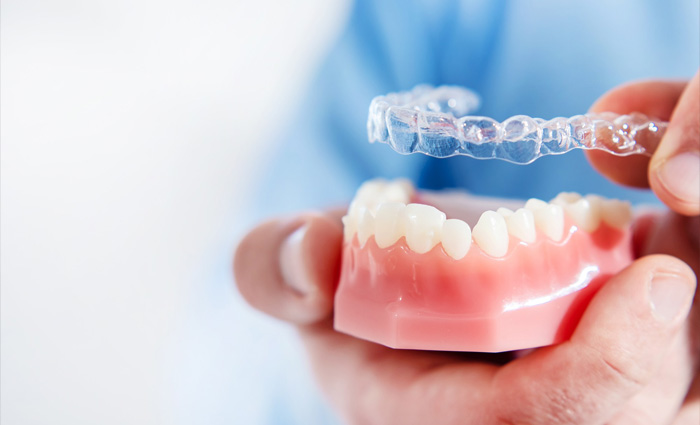Dental cement is composed of various ingredients that help connect dental devices to teeth. It serves as a luting agent, sealer, liner, or adhesive. The wide applications of dental cement allow dental practitioners to provide the required dental restorative treatment to their clients.
What Is Dental Cementation?
Dental cements, with their chemical constitution, exhibit impressive durability and are not easily damaged by the strain and pressure exerted by the teeth and jaw bones. Cementation serves the purpose of attaching a prosthetic restoration securely to the enamel or dentine.
For dental applications to be durable and comfortable, the dental cement must possess certain qualities, such as
- It needs to withstand the force and strain caused by chewing and biting.
- It should not cause pulp irritation.
- It is decay-resistant and provides a secure seal.
Types of Dental Restorations Using Cementation
Dental cement is an important component in dentistry that serves to help with the insertion of temporary as well as permanent fillings. After a temporary filling is placed, the tooth is quickly sealed with dental cement until a permanent solution can be found. For permanent fillings, the fillings are firmly cemented in place to guarantee stability and maintain functionality over an extended period. Bridges, crowns, and orthodontic brackets are also attached with dental cement for proper adhesion.
Common Types of Dental Cements
Various types of dental bonding cements are used based on your specific needs and the dentist’s preference.
Glass Ionomer Cement (GIC): It is very well known and widely used. This cement, when applied, releases excess fluoride. This forms robust bonds with both the enamel and tooth due to its remarkable adhesion properties, ensuring a tight and secure bond. It is utilized in cavity preparation, placement of fillings, and restoration of deciduous teeth.
Resin-Modified Glass Ionomer (RMGI): It is simple to use and clean up after its application. Once it is applied, it releases fluoride gradually over time. This type of cement is often employed in restoring primary teeth.
Resin Cements: It is a polymer-based cement that is designed to bond well with the tooth structure. It is used for many applications, including the cementation of crowns, bridges, and orthodontic brackets.
Zinc-Phosphate Cement: This contains zinc and phosphate. It can be easily mixed up and cleaned, but it does not firmly bond to tooth structures because of its low pH.
Polycarboxylate Cement: This cement bonds strongly to the tooth structure in the oral cavity. It is extensively used as a restorative material for cavity preparations, a bonding material for fixing prostheses, and also for root canal filling and pulp capping.
The Dental Cementation Procedure
After the dental consultation, there will be a complete oral exam in order to determine the condition of your oral cavity. Following that, initial tooth preparation and restoration take place, along with tooth cleaning and drying. The restoration will then be accurately placed and checked before the cement is mixed and applied. Dental cementation involves the precise placement of dental cement to ensure that abutment dental restorations like crowns or dental bridges are very well placed on natural teeth. It ensures a strong bond that is long-lasting between the restoration and the tooth structure, providing support for the dental restoration. Once the restoration is in place, it will be examined to ensure the best possible fit; subsequently, it will be fixed into place and allowed to cure. A detailed examination will then be performed to detect any occlusion problems, and necessary adjustments will be made accordingly.
Care and Maintenance Post-Cementation
Make sure you do not use the tooth for eating immediately after the cementation or bonding process until sensation returns to the area, especially if the area was anesthetized. The cement requires around 24 hours to set, so avoid hard or sticky foods during this period.
Dental cement finds applications in different dental treatments, like temporary fillings and permanent crowns. It provides a reliable and durable solution to effectively restore damaged teeth and enhance overall oral health.
References
- Heboyan, A., Vardanyan, A., et al. (2023). Dental Luting Cements: An Updated Comprehensive Review. Molecules (Basel, Switzerland), 28(4), 1619. https://www.ncbi.nlm.nih.gov/pmc/articles/PMC9961919/ . Accessed on 06 June 2024.
- Vaderhobli R. M. (2011). Advances in dental materials. Dental clinics of North America, 55(3), 619–x. https://pubmed.ncbi.nlm.nih.gov/21726695/. Accessed on 06 June 2024.
- Pegoraro, T. A., da Silva, N. R., & Carvalho, R. M. (2007). Cements for use in esthetic dentistry. Dental clinics of North America, 51(2), 453–x. https://pubmed.ncbi.nlm.nih.gov/17532922/. Accessed on 06 June 2024.








